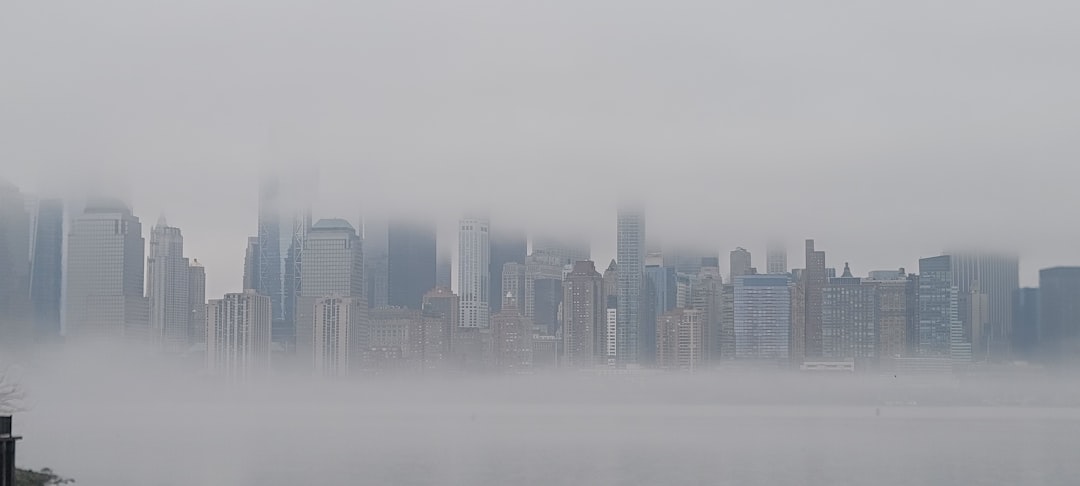Hedorah, often referred to as the Smog Monster, first emerged in the 1971 film “Godzilla vs. Hedorah.” This unique kaiju, born from the toxic waste and pollution of modern society, serves as a striking representation of humanity’s environmental negligence. Unlike other monsters in the Godzilla franchise, Hedorah is not merely a creature of destruction; it embodies the very consequences of pollution and industrialization.
As you delve into Hedorah’s story, you will discover how this creature reflects the anxieties of its time and continues to resonate with contemporary environmental issues. The character of Hedorah is not just a fictional monster; it is a manifestation of real-world concerns about pollution and its effects on both the environment and human health. The film’s release coincided with a growing awareness of environmental degradation, making Hedorah a timely symbol of the ecological crises that were beginning to surface in public consciousness.
As you explore Hedorah’s narrative, you will find that it serves as a cautionary tale, urging viewers to confront the consequences of their actions and consider the impact of pollution on future generations.
Key Takeaways
- Hedorah is a fictional monster in the Godzilla series, known for its connection to pollution and environmental destruction.
- Hedorah is often seen as a symbol of pollution and the negative impact of human activities on the environment.
- The character of Hedorah highlights the devastating effects of pollution on the environment, including air and water contamination.
- Hedorah has been featured in various forms of popular culture, including films, television shows, and video games.
- In Godzilla films, Hedorah serves as a powerful antagonist, representing the destructive force of pollution and environmental degradation.
Hedorah as a Symbol of Pollution
The Monster as a Reflection of Reality
As we reflect on Hedorah’s origins, it becomes clear that this creature is not just a product of imagination, but a reflection of the real dangers posed by pollution. The film serves as a stark reminder of the catastrophic consequences of unchecked industrialization and the importance of addressing this critical issue.
The Insidious Nature of Pollution
Hedorah’s ability to thrive on pollution, growing stronger as it consumes more toxic waste, highlights the insidious nature of pollution itself. Just as Hedorah evolves throughout the film, so too does the problem of pollution in our world, taking on various forms such as airborne toxins, water contamination, and soil degradation.
A Multifaceted Threat
As we consider Hedorah’s role as a symbol of pollution, we are forced to reflect on the ways in which society has often turned a blind eye to these issues, allowing them to fester and grow until they become overwhelming. The film serves as a powerful reminder of the need for collective action to combat this multifaceted threat and protect our planet for future generations.
Hedorah’s Impact on the Environment

The environmental impact of Hedorah is profound and serves as a chilling reminder of what unchecked pollution can do to our planet. In the film, Hedorah wreaks havoc on cities, leaving destruction in its wake while simultaneously poisoning the air and water. This portrayal serves as an exaggerated yet poignant illustration of how pollution can devastate ecosystems and human habitats alike.
As you watch Hedorah’s rampage, you may feel a sense of urgency to address these pressing environmental issues before they spiral out of control. Hedorah’s presence also raises questions about the interconnectedness of all living things. The monster’s toxic nature not only harms humans but also affects wildlife and plant life in its vicinity.
This interconnectedness is a crucial aspect of environmentalism; when one part of an ecosystem suffers, it can have far-reaching consequences for all other components. As you contemplate Hedorah’s impact on the environment, consider how your own actions contribute to this complex web and what steps you can take to mitigate harm.
The Representation of Hedorah in Popular Culture
| Media | Representation of Hedorah |
|---|---|
| Films | Hedorah has appeared in several Godzilla films, including “Godzilla vs. Hedorah” (1971) and “Godzilla: Final Wars” (2004). |
| Television | Hedorah has made appearances in various Godzilla television series and animated shows. |
| Comics | The character has been featured in Godzilla comic books and graphic novels, often as a formidable opponent for the iconic monster. |
| Merchandise | Hedorah has been featured in various merchandise, including action figures, posters, and collectibles. |
Hedorah’s influence extends beyond the realm of film; it has permeated popular culture in various forms. From merchandise to references in other media, Hedorah has become an iconic figure representing environmental concerns. You may have encountered Hedorah in video games, comic books, or even art installations that seek to raise awareness about pollution and its effects.
This widespread representation underscores the character’s significance as a cultural symbol, reminding us that the fight against pollution is not confined to one medium or message. In addition to its appearances in various forms of media, Hedorah has also inspired discussions about environmental activism. Artists and creators often use this character as a vehicle for social commentary, encouraging audiences to reflect on their relationship with nature and the consequences of their actions.
As you engage with these representations, consider how they challenge you to think critically about your own role in addressing environmental issues and inspire you to take action.
Hedorah’s Role in Godzilla Films
Within the Godzilla franchise, Hedorah occupies a unique space as one of Godzilla’s most formidable foes. Unlike other monsters that represent various aspects of humanity’s fears—such as nuclear power or military aggression—Hedorah embodies the very real threat posed by pollution. In their battles, Godzilla and Hedorah symbolize the struggle between nature and human-made destruction.
As you watch their confrontations unfold, you may find yourself rooting for Godzilla not just as a monster but as a representation of nature fighting back against humanity’s negligence. The dynamic between Godzilla and Hedorah also serves to highlight the complexities of environmental issues. While Godzilla is often portrayed as a destructive force, his battles against Hedorah reveal a deeper narrative about the need for balance between nature and human progress.
This tension invites you to consider how we can coexist with our environment rather than exploit it. As you reflect on their encounters, think about what lessons can be drawn from their struggles and how they apply to our current environmental challenges.
The Real-Life Implications of Hedorah’s Symbolism

The Consequences of Neglecting the Environment
As pollution continues to threaten ecosystems and public health worldwide, Hedorah serves as a stark reminder of what can happen if we fail to take action. The character embodies the consequences of neglecting our environment, urging us to confront uncomfortable truths about our consumption habits and waste management practices.
A Call to Action for Sustainability
As you consider these implications, it becomes clear that Hedorah is not just a fictional monster but a call to action for individuals and communities alike. Moreover, Hedorah’s story encourages us to think critically about our relationship with technology and industry. In an age where convenience often trumps sustainability, we must grapple with the reality that our choices have far-reaching consequences.
Advocating for Change
By reflecting on Hedorah’s symbolism, you may feel inspired to advocate for more sustainable practices in your own life and community. Whether it’s reducing waste, supporting clean energy initiatives, or participating in local environmental efforts, every action counts in the fight against pollution.
The Fight Against Pollution and Hedorah’s Message
The fight against pollution is ongoing, and Hedorah’s message remains relevant as we navigate this complex issue. As awareness grows about climate change and environmental degradation, many individuals and organizations are stepping up to combat these challenges head-on. You may find yourself inspired by grassroots movements advocating for cleaner air and water or by innovative technologies aimed at reducing waste and emissions.
In this context, Hedorah serves as both a warning and a motivator—a reminder that we must confront our past mistakes while striving for a more sustainable future. Additionally, Hedorah’s story encourages collaboration across various sectors—government, industry, and individuals—to address pollution effectively. Just as Godzilla must confront Hedorah with strength and determination, we too must unite in our efforts to combat environmental degradation.
By working together and sharing knowledge, we can create meaningful change that benefits both people and the planet. As you reflect on this message, consider how you can contribute to collective efforts aimed at reducing pollution and promoting sustainability.
The Continued Relevance of Hedorah’s Symbolism
In conclusion, Hedorah remains an enduring symbol of pollution and environmental degradation that resonates deeply with contemporary audiences. Its origins in industrial waste serve as a powerful reminder of humanity’s impact on the planet, while its representation in popular culture encourages ongoing discussions about sustainability and activism. As you reflect on Hedorah’s story, consider how its symbolism challenges you to confront your own relationship with the environment and inspires you to take action against pollution.
As we face increasingly urgent environmental challenges, Hedorah’s message becomes even more critical. It urges us not only to acknowledge the consequences of our actions but also to actively participate in creating solutions for a healthier planet. By embracing this message and recognizing our role in combating pollution, we can honor Hedorah’s legacy while working towards a more sustainable future for generations to come.
